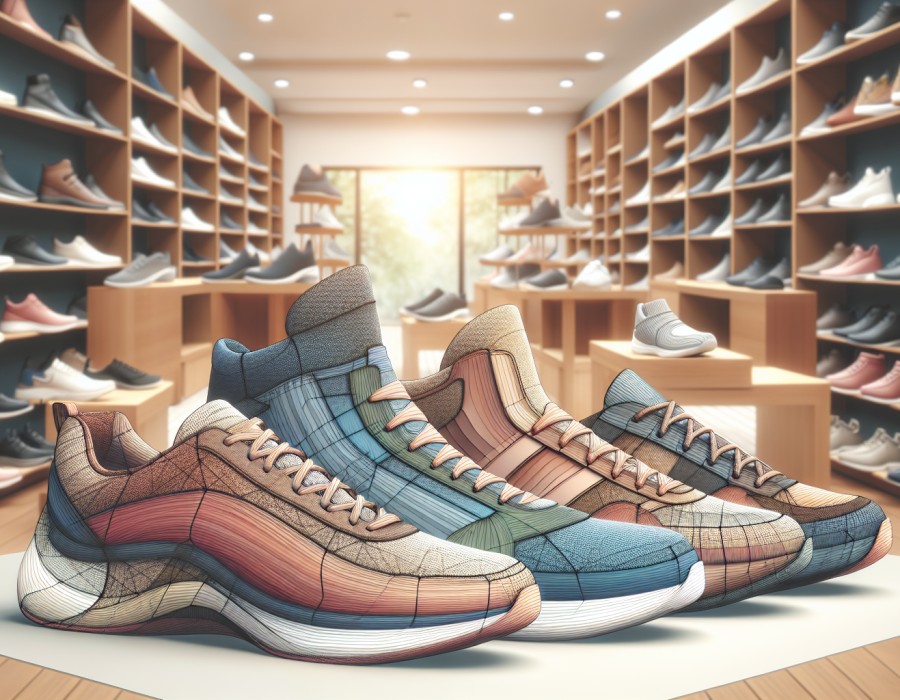Introduction
When it comes to finding the perfect pair of shoes for extra wide swollen feet, comfort and support are key. However, once you've found the right shoes, it's essential to know how to care for and maintain them properly to ensure they last as long as possible. In this comprehensive guide, we'll discuss the best practices for caring for and maintaining shoes for extra wide swollen feet.
Understanding Extra Wide Swollen Feet
Before we dive into the care and maintenance of shoes for extra wide swollen feet, it's essential to understand the unique challenges that come with this condition. Swollen feet can be caused by a variety of factors, including:
- Edema
- Pregnancy
- Obesity
- Certain medical conditions, such as diabetes or arthritis
When feet are swollen, they require extra room and support in shoes to prevent discomfort and further swelling.
Choosing the Right Shoes for Extra Wide Swollen Feet
When shopping for shoes for extra wide swollen feet, look for the following features:
- Wide toe box
- Adjustable closures, such as laces or Velcro
- Soft, breathable materials
- Cushioned insoles
- Sturdy, supportive soles
Avoid shoes with narrow or pointed toe boxes, high heels, or rigid materials that can constrict the feet and cause discomfort.
Breaking in New Shoes
Even when you've found the perfect pair of shoes for your extra wide swollen feet, it's important to break them in gradually to prevent blisters and discomfort. Here are some tips for breaking in new shoes:
- Wear them around the house for short periods before wearing them out
- Use thick, cushioned socks to prevent rubbing
- Apply moleskin or bandages to areas prone to blisters
- Gradually increase the amount of time you wear the shoes each day
Cleaning and Sanitizing Shoes
Regular cleaning and sanitizing of your shoes can help prevent the buildup of bacteria and odors, which can be especially important for those with extra wide swollen feet. Here's how to clean and sanitize your shoes:
Cleaning Leather Shoes
- Remove dirt and debris with a soft brush or cloth
- Apply a small amount of leather cleaner to a clean cloth and gently rub it into the leather
- Wipe away excess cleaner with a damp cloth
- Allow the shoes to air dry completely before wearing
Cleaning Canvas or Fabric Shoes
- Remove dirt and debris with a soft brush or cloth
- Mix a small amount of mild detergent with warm water
- Dip a clean cloth into the solution and gently scrub the shoes
- Rinse the cloth with clean water and wipe away excess soap
- Allow the shoes to air dry completely before wearing
Sanitizing Shoes
- Mix equal parts water and white vinegar in a spray bottle
- Spray the inside of the shoes thoroughly
- Allow the shoes to air dry completely before wearing
Rotating Shoes
Rotating your shoes can help them last longer and prevent the buildup of bacteria and odors. Aim to have at least two pairs of shoes that you can alternate between, allowing each pair to dry out completely between wears.
Using Shoe Trees
Shoe trees can help maintain the shape of your shoes and prevent creasing and wrinkling. Look for shoe trees made from breathable materials, such as cedar, and insert them into your shoes when you're not wearing them.
Storing Shoes Properly
Proper shoe storage can help extend the life of your shoes and prevent damage. Here are some tips for storing shoes:
- Store shoes in a cool, dry place away from direct sunlight
- Use shoe boxes or clear plastic containers to protect shoes from dust and debris
- Stuff shoes with tissue paper to maintain their shape
- Avoid storing shoes in damp or humid areas, as this can promote the growth of mold and mildew
Replacing Insoles
Over time, the insoles of your shoes can become worn down and lose their cushioning and support. Replacing the insoles regularly can help keep your feet comfortable and prevent further swelling. Look for insoles specifically designed for extra wide feet, and replace them every 3-6 months, depending on how often you wear your shoes.
Repairing Shoes
If your shoes become damaged, it's important to repair them promptly to prevent further damage and extend their lifespan. Common shoe repairs include:
- Resoling
- Patching holes or tears
- Replacing buckles or closures
- Stitching loose seams
If you're not comfortable making repairs yourself, take your shoes to a professional cobbler for assistance.
Waterproofing Shoes
If you live in a rainy or snowy climate, waterproofing your shoes can help keep your feet dry and prevent damage to the materials. Look for a waterproofing spray or cream specifically designed for the type of material your shoes are made from, and apply it according to the manufacturer's instructions.
Conclusion
Caring for and maintaining shoes for extra wide swollen feet requires a bit of extra attention and effort, but it's well worth it to keep your feet comfortable and your shoes in good condition. By following these tips and guidelines, you can ensure that your shoes last as long as possible and provide the support and comfort your feet need.






Comments